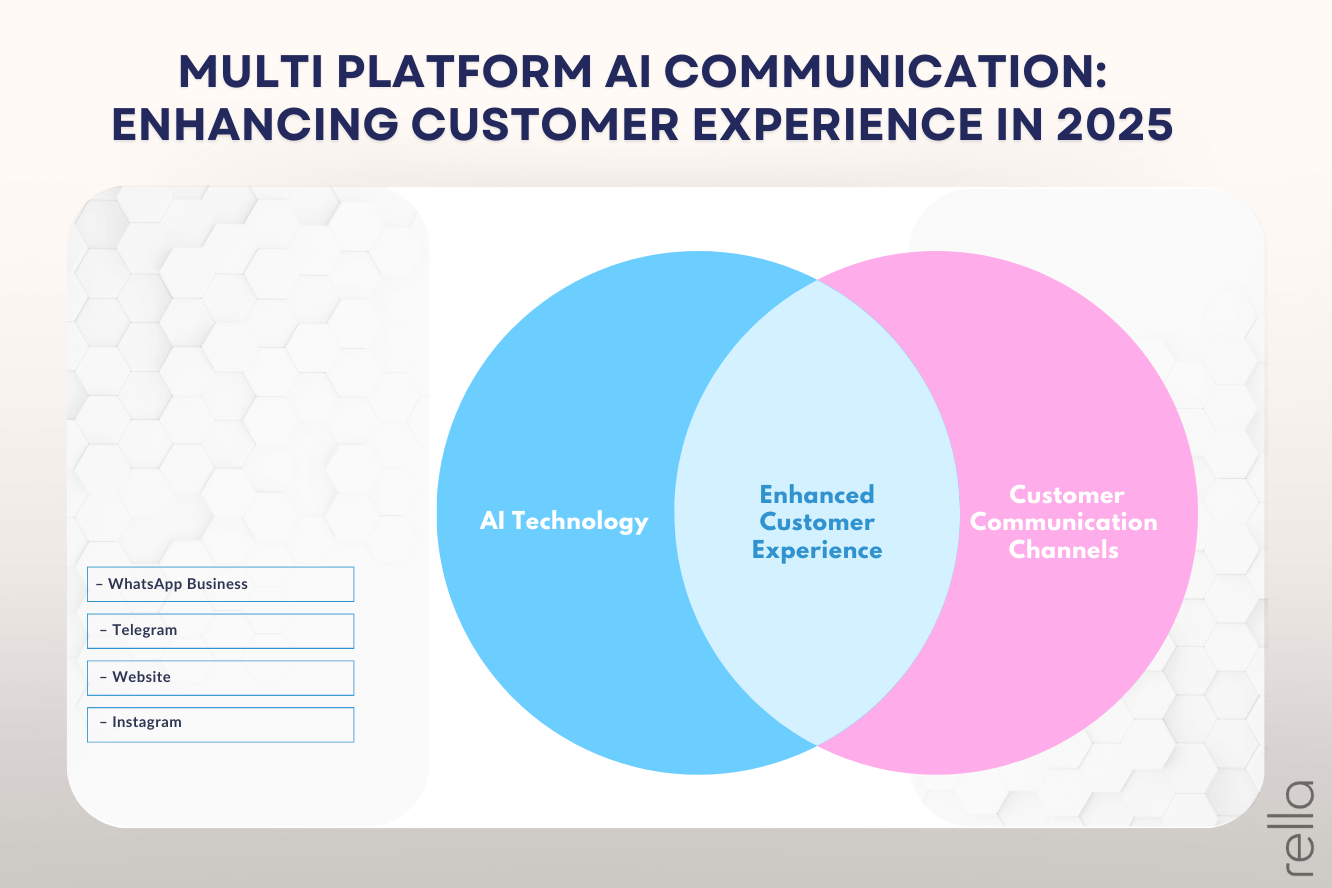The Role of AI in Business Communication
The integration of AI in business communication has allowed companies to automate repetitive tasks, respond faster to customer inquiries, and foster better collaboration among team members. This transformation is not only reshaping how businesses operate but also setting new standards for customer expectations, with AI-driven tools providing personalized, instant, and more accurate responses.
As we move further into 2025, AI powered communication tools, such as chatbots, virtual assistants, and automated messaging systems, are becoming mainstream. Businesses leveraging these tools are seeing significant improvements in their communication processes, with notable impacts on customer satisfaction and team productivity.
In this article, we will explore the evolving role of AI in business communication, how it’s transforming various communication channels, and how businesses can leverage these advancements to stay competitive in a fast-paced digital world. By the end of this piece, you’ll have a clear understanding of how AI is shaping the future of business communication and why it is essential for your company’s success.
How AI is Transforming Internal Communication
Effective internal communication is essential for the smooth operation of any business. In today’s fast paced digital world, AI has emerged as a game changer in improving the way teams and departments communicate. By automating routine tasks, AI not only saves time but also ensures that important messages are delivered efficiently, fostering better collaboration and productivity within organizations.
AI driven platforms are revolutionizing internal communication by streamlining various processes that were once manual and time consuming. Some of the keyways in which AI enhances internal communication include:
- Automated Messaging and Updates: With AI tools, employees can receive automated updates about project status, upcoming deadlines, or important meetings. This helps reduce information overload and ensures that team members stay informed without having to manually check multiple communication channels.
- Virtual Meetings and Scheduling: Scheduling and managing virtual meetings can be a daunting task, especially when teams are distributed across different time zones. AI-powered assistants like Zoom AI Companion automate meeting scheduling, send reminders, and even handle follow-ups. This minimizes human errors and ensures smoother collaboration.
- Task Management and Coordination: AI can help manage and assign tasks, track progress, and provide reminders for deadlines. Tools like Timo AI integrate multiple communication channels, such as Instagram, WhatsApp Business, and Telegram, making task management more centralized and accessible for team members.
- Improved Knowledge Sharing: AI can automatically categorize and organize shared documents, files, and knowledge base articles, making it easier for employees to find the information they need quickly.
AI-Driven Internal Communication: Boosting Team Efficiency
Incorporating AI into these aspects of internal communication reduces friction, accelerates workflows, and enhances team collaboration. Timo AI, for example, is an excellent solution for businesses looking to integrate AI with their existing communication systems, allowing for seamless communication across multiple platforms. By automating routine tasks and optimizing communication processes, Timo AI helps businesses improve their internal efficiency and maintain consistent messaging across different departments.
As AI continues to evolve, we can expect even more innovative tools to further transform how teams collaborate and communicate within organizations, making AI an essential asset in today’s business landscape.
Enhancing Customer Interaction with AI-Powered Tools
In today’s competitive business landscape, providing exceptional customer service is crucial for maintaining strong relationships and driving growth. AI-powered tools are transforming how businesses engage with their customers, enabling them to deliver faster, more personalized, and highly efficient communication across various platforms. These tools help automate and streamline customer interactions, making it easier for businesses to manage inquiries, resolve issues, and enhance customer satisfaction.
How AI Enhances Customer Interactions
1. 24/7 Availability for Seamless Customer Communication
AI-powered tools provide businesses with the ability to offer 24/7 customer support. With solutions like Timo AI, customers can receive immediate assistance at any time, even outside of regular business hours. Whether through WhatsApp Business, Telegram, or a website, AI ensures timely responses and keeps customers engaged without delay.
2. Automating Routine Customer Support Tasks
AI-driven tools like Timo AI can handle frequently asked questions (FAQs) automatically. By using Natural Language Processing (NLP), these tools engage with customers in a conversational manner, reducing the strain on customer support teams. This allows the support team to focus on more complex issues while the AI efficiently handles repetitive tasks.
3. Personalizing Customer Communication to Build Loyalty
AI analyzes customer data, preferences, and behaviors, enabling businesses to send tailored messages and product recommendations. By personalizing interactions, businesses can increase customer engagement, build trust, and foster long-term loyalty, ensuring each customer feels valued and understood.
4. Gaining Insights to Refine Communication Strategies
AI tools also collect valuable data from multiple communication channels, providing businesses with deep insights into customer preferences, behavior, and pain points. By analyzing this data, businesses can improve their communication strategies, address customer concerns, and create a more targeted and effective customer experience.
5. Seamless Integration Across Multiple Platforms for Consistent Communication
AI-powered communication tools like Timo AI integrate seamlessly across a variety of platforms, ensuring that customer interactions are managed from a single interface. Whether customers reach out via Instagram, WhatsApp, Telegram, or a website, Timo AI helps businesses respond promptly, maintain consistency, and ensure a smooth, unified communication process.
Top AI Tools Shaping Business Communication in 2025
In 2025, AI-powered tools are becoming essential for businesses seeking to enhance their communication processes. These tools improve efficiency, streamline interactions, and provide organizations with the ability to scale their operations. Below, we explore some of the top AI tools that are shaping the future of business communication:
1. Zoom AI Companion
- Overview: Zoom AI is revolutionizing virtual communication by offering AI-powered meeting management features. This tool automates the scheduling of meetings, sends follow-up reminders, and can even manage virtual meeting logistics.
- Benefits: By reducing the manual effort of scheduling and follow-ups, Zoom AI allows teams to focus on more important tasks. It improves meeting productivity and ensures smoother collaboration, especially in hybrid or remote work settings.
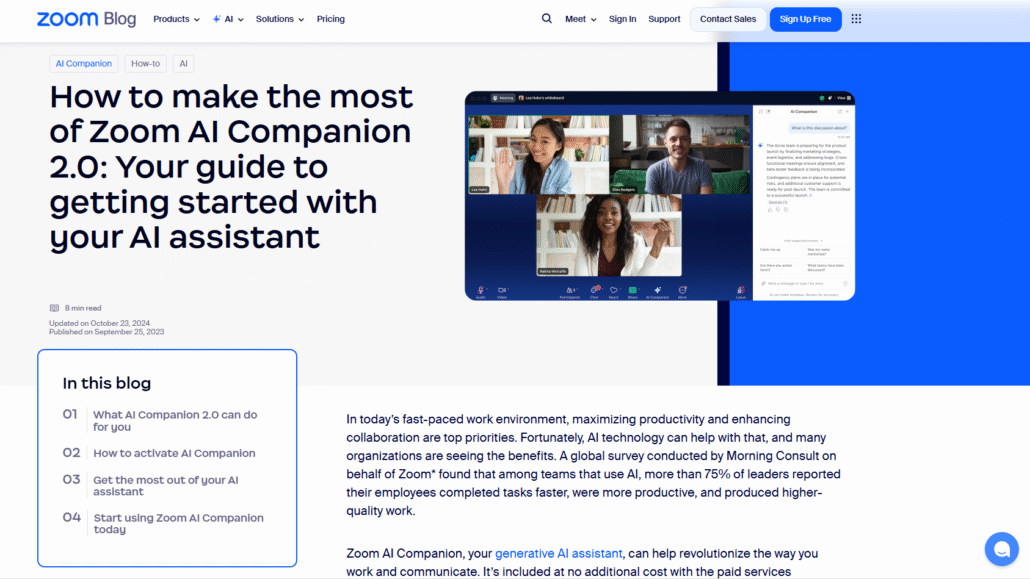
2. Microsoft Teams AI Features
- Overview: Microsoft Teams has integrated several AI capabilities to enhance communication within teams. Features such as automated message sorting, transcription of meetings, and real-time language translation are making the tool indispensable for global collaboration.
- Benefits: Team AI helps centralize communication, streamline project management, and make meetings more effective. With AI-driven suggestions and automatic task management, it saves time and enhances collaboration, especially for teams working remotely.
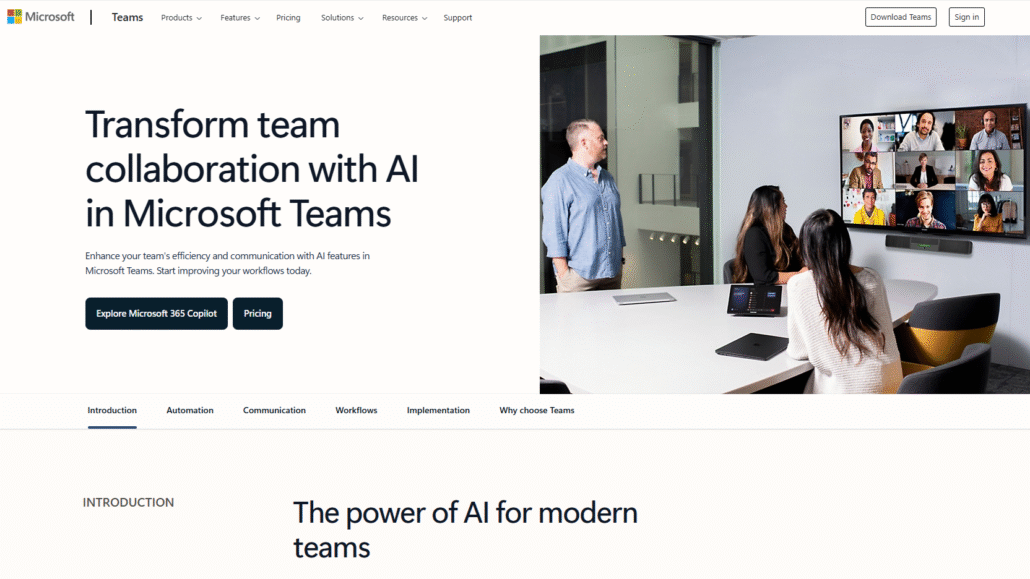
3. Grammarly AI
- Overview: Grammarly’s AI engine is a game changer for written communication. It provides real-time grammar and spelling checks, tone analysis, and suggestions for clarity and style improvements.
- Benefits: Ensuring your written communication is clear and professional is essential in business. Grammarly AI enhances the quality of emails, reports, and internal documentation, helping teams avoid misunderstandings and errors.
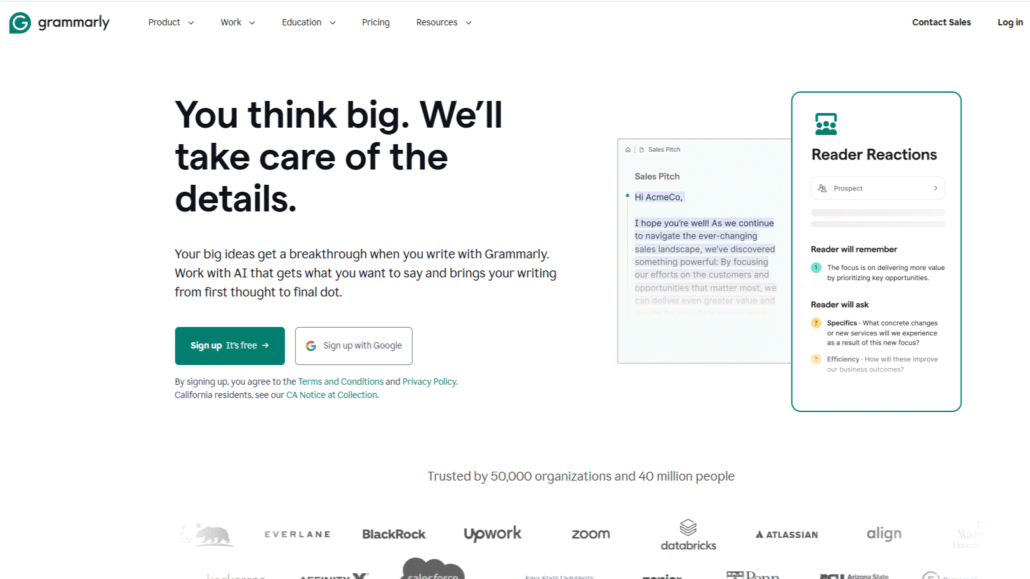
4. Timo AI
- Overview: Timo AI is a cutting-edge AI tool designed specifically for business communication and customer management. It integrates with popular platforms like WhatsApp Business, Instagram, Telegram, and websites to automate communication and customer service tasks.
- Benefits: Timo AI enhances customer satisfaction by reducing response times and streamlining communication workflows. With its automated messaging, real time conversation tracking, and detailed analytics, businesses can ensure more personalized and responsive customer interactions.
Why These Tools Matter
These AI tools not only make communication more efficient but also foster greater collaboration, enhance customer satisfaction, and enable businesses to scale quickly. They allow teams to focus on what matters most creative problem solving and strategic decision making by automating routine communication tasks.
In 2025, adopting these top AI tools will help businesses maintain a competitive edge, increase operational efficiency, and provide a seamless communication experience both internally and with customers.
How to Choose the Right AI Tools for Your Business Communication Needs
In this section, we will explore how to choose the right AI tools for your business communication needs. AI tools play a crucial role in enhancing efficiency and communication, both internally and externally. Selecting the right tools can help streamline processes, reduce costs, and improve productivity across the board.
1. Scalability and Flexibility
Scalability and flexibility are key factors when choosing AI tools. A suitable tool must be able to scale as your business grows and adapt to changing needs. For example, as your company expands its teams or adds new channels for customer communication, your AI tool must be able to handle this growth efficiently.
Timo AI allows businesses to scale effortlessly as their needs evolve. With easy integration across multiple channels like WhatsApp, Telegram, Instagram, and websites, Timo ensures that even with business growth, your communication processes remain smooth and effective.
2. Compatibility with Existing Systems
It’s essential that the AI tools you choose integrate seamlessly with your existing systems. This prevents disruption to your operations and ensures that you can leverage the benefits of AI without overhauling your entire setup. A smooth integration process helps save time and resources.
3. Customization and Personalization
One of the key advantages of AI tools is the ability to tailor them to your specific business needs. This includes customizing communications, adjusting automation rules, and generating personalized reports to better understand customer behavior and communication patterns.
4. Cost Effectiveness
Cost-effectiveness is another vital aspect to consider when choosing AI tools. AI should not only help improve efficiency but also reduce operational costs. A cost-effective AI tool provides businesses with the benefits of automation and AI capabilities without the need for significant upfront investments.
5. User-Friendliness
AI tools must be user-friendly to ensure that your team can easily adopt them. Complicated interfaces or complex training requirements can create barriers to effective use. Opting for a tool with an intuitive user interface ensures faster adoption and smoother operations.
Preparing Your Business for the Future of AI
To stay competitive, it’s crucial for businesses to start integrating AI tools now. The earlier businesses implement AI-powered communication tools, the better positioned they will be for the future. Here are a few strategies businesses can use to prepare for the AI-driven future:
- Invest in Scalable AI Tools: As businesses grow, their communication needs will evolve. Scalable tools like Timo AI allow businesses to remain effective as they expand, ensuring seamless communication management over time.
- Train Your Team: Adopting AI tools is only part of the equation. To fully leverage the benefits, businesses must invest in training their teams on how to use these tools. A well-prepared team will help maximize the efficiency of AI-powered systems.
- Stay Agile and Adaptable: The AI landscape is rapidly changing. Businesses that remain flexible and ready to adopt new AI solutions will be better equipped to stay ahead of competitors and continue meeting customer expectations.
How Timo AI Can Support Your Business
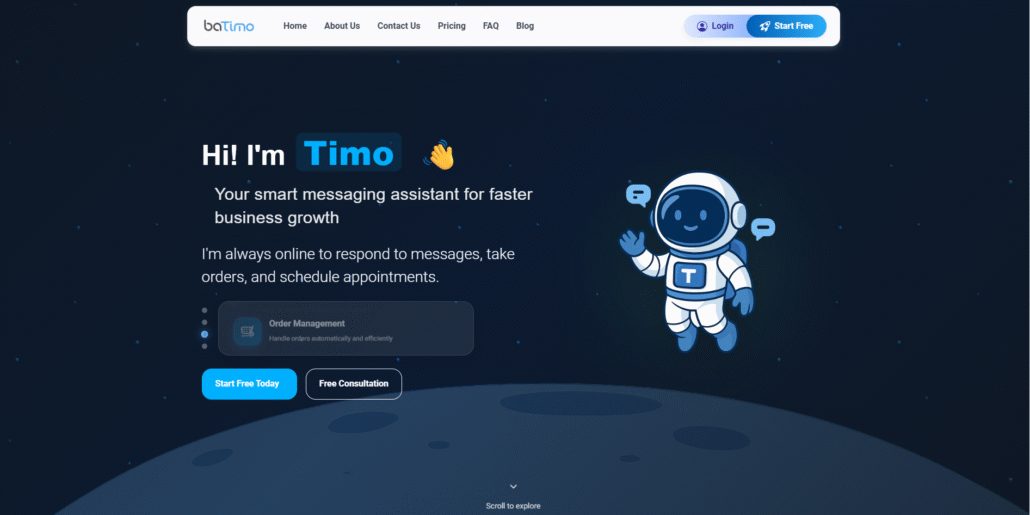
Seamless Multi-Platform Integration
Timo AI automates customer interactions across multiple platforms like WhatsApp, Telegram, and websites, ensuring smooth communication and enhancing customer engagement.
Streamlined Workflows
By automating routine tasks, Timo AI helps businesses optimize internal communication and workflows, reducing manual work and increasing efficiency.
Improved Customer Engagement
Timo AI enables businesses to interact with customers 24/7, providing timely responses, personalized messaging, and enhancing customer satisfaction.
Future-Ready Communication
As AI technology evolves, tools like Timo AI will remain essential in helping businesses adapt to new communication challenges, keeping them competitive in a rapidly changing market.
Cost-Effective Solution
By automating customer service and communication tasks, Timo AI reduces labor costs and increases operational efficiency, making it a cost-effective solution for businesses of all sizes.
The Future of AI in Business Communication
AI is set to revolutionize business communication, offering faster, more efficient solutions for internal and customer-facing interactions. Tools like Timo AI are already enhancing productivity by automating routine tasks and improving communication quality.
As AI technology advances, businesses will gain even more powerful tools to streamline processes, reduce costs, and provide personalized experiences. Investing in AI-driven solutions today, such as Timo AI, positions companies for success, helping them stay competitive and future-ready in a rapidly evolving market.
By adopting AI tools now, businesses ensure they remain agile, innovative, and responsive to the demands of tomorrow.

